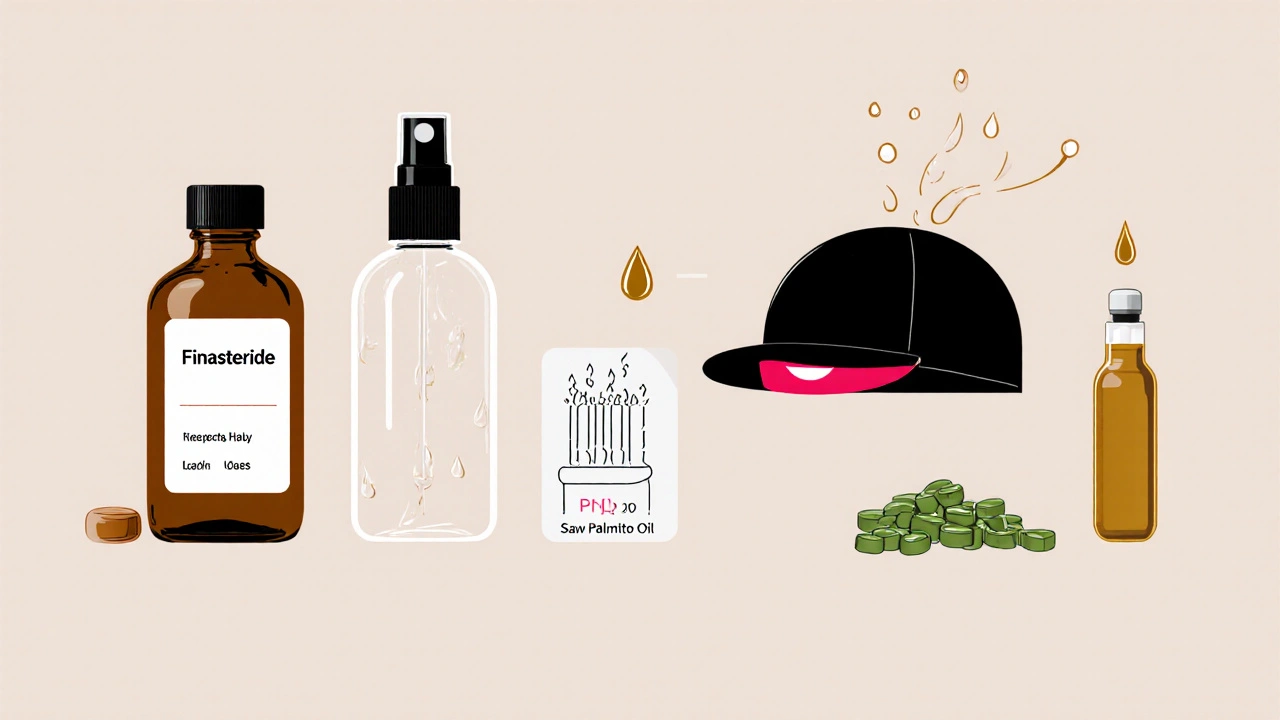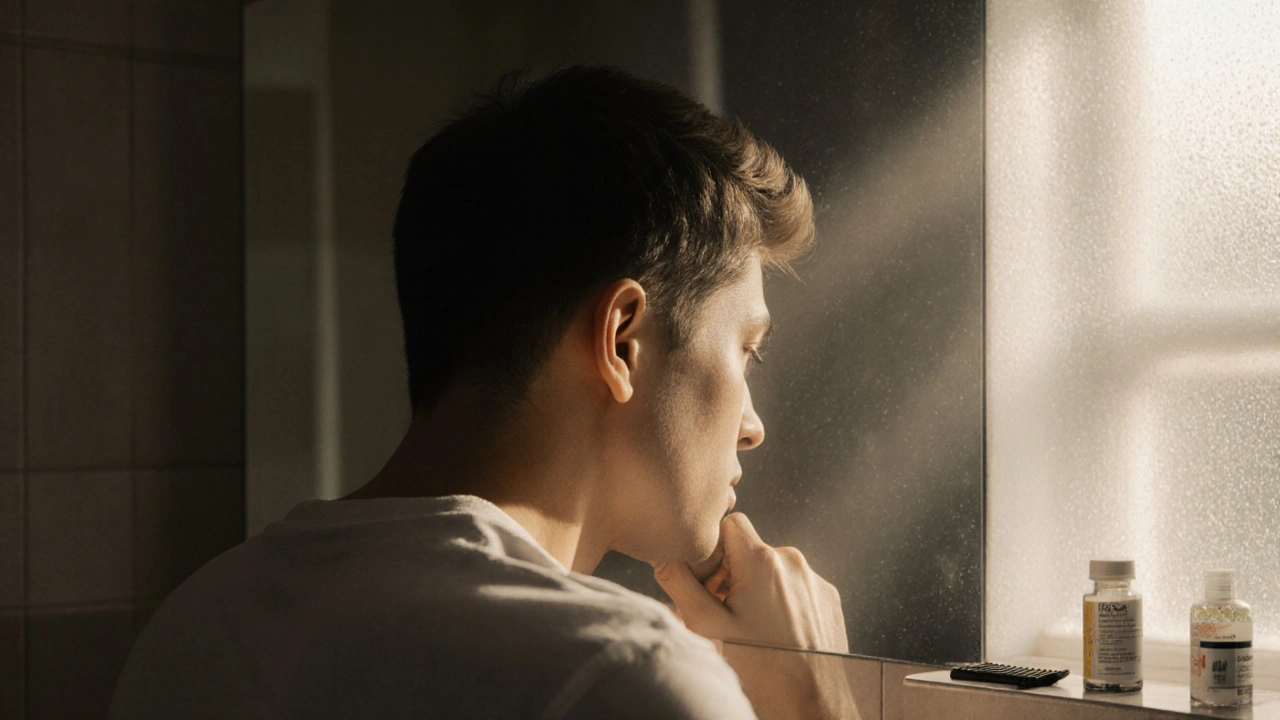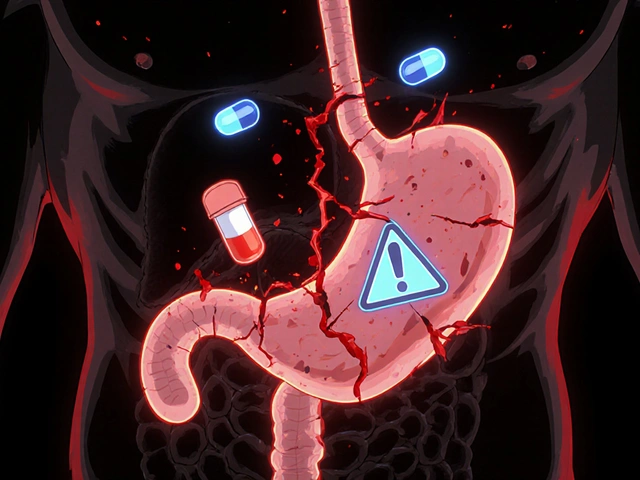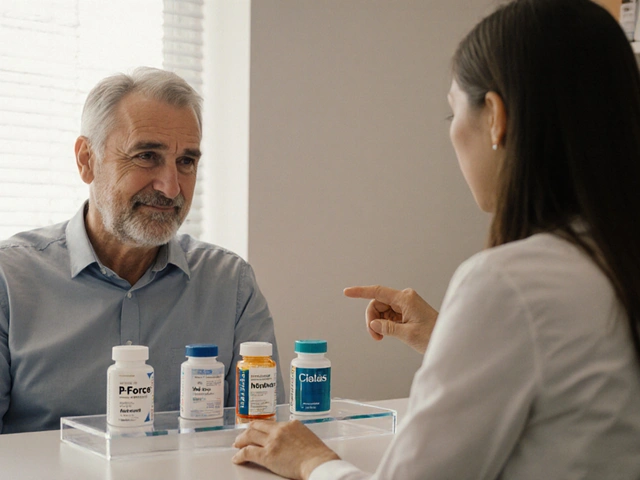Hair Loss Treatment Comparison Tool
Treatment Comparison Results
Mechanism:
Efficacy:
Annual Cost:
Side Effects:
Mechanism:
Efficacy:
Annual Cost:
Side Effects:
Recommendation:
TL;DR
- Propecia (finasteride) works by blocking DHT, delivering 15‑25% regrowth in most men.
- Topical minoxidil is the only FDA‑approved over‑the‑counter solution; results are slower but safe.
- Dutasteride is a stronger DHT blocker, often used off‑label for better efficacy but carries higher side‑effect risk.
- Low‑level laser therapy (LLLT) offers a drug‑free option with modest gains at a higher upfront cost.
- Surgical options (hair transplant, PRP) give the most dramatic and permanent outcomes but are pricey and invasive.
Below you’ll find a side‑by‑side look at each option, so you can decide which route matches your budget, tolerance for meds, and long‑term goals.
What is Propecia (Finasteride) and how does it work?
Propecia is a brand name for finasteride, an oral 1mg tablet that inhibits the enzyme 5‑α‑reductase typeII. By lowering dihydrotestosterone (DHT) levels in scalp tissue, it slows follicle miniaturisation and can promote modest regrowth. Approved by the FDA in 1997 for male‑pattern baldness (androgenetic alopecia), the drug is taken daily. Clinical trials report that around 15‑25% of users see visible hair density improvement after 12months.
Key points to remember:
- Effectiveness hinges on early‑stage loss; advanced thinning may need supplemental therapies.
- Side effects include reduced libido, erectile dysfunction, and rare mood changes-typically reversible after stopping.
- Finasteride needs a prescription, and cost in Australia averages AU$30‑40 per month.
How we compare hair‑loss options
When weighing Propecia against alternatives, I usually ask four questions:
- What’s the mechanism of action? (Hormonal, topical, mechanical, surgical)
- How strong is the evidence for regrowth?
- What’s the total yearly cost, including maintenance?
- What side‑effects or risks are most relevant to the user?
This framework keeps the comparison fair and helps you prioritize what matters most.

Quick‑look comparison table
| Treatment | Mechanism | Typical Efficacy* (hair regrowth) | Administration | Annual Cost (AU$) | FDA Status | Common Side‑effects |
|---|---|---|---|---|---|---|
| Finasteride (Propecia) | DHT blocker (5‑α‑reductase inhibitor) | 15‑25% noticeable regrowth | Oral 1mg daily | ≈AU$360‑480 | Prescription, approved | Sexual dysfunction, mood changes |
| Minoxidil | Vasodilator, prolongs anagen phase | 10‑15% modest density | Topical 5% solution or foam twice daily | ≈AU$120‑180 | OTC, approved | Scalp irritation, unwanted facial hair |
| Dutasteride | Dual 5‑α‑reductase inhibitor (typeI+II) | 20‑30% higher than finasteride | Oral 0.5mg daily (off‑label) | ≈AU$600‑720 | Prescription for BPH, off‑label for hair | Sexual side‑effects, higher hormone impact |
| Low‑Level Laser Therapy (LLLT) | Photobiomodulation stimulates follicles | 5‑10% mild improvement | Device (cap/comb) 3‑4times/week | ≈AU$800‑1,200 (device) | FDA‑cleared (medical device) | None reported, device cost |
| Hair Transplant (FUE) | Autologous grafts relocate healthy follicles | 90‑95% permanent coverage | Surgical, 1‑2 sessions | ≈AU$8,000‑15,000 (depends on graft count) | Not FDA‑regulated as drug | Scarring, post‑op pain, cost |
| Platelet‑Rich Plasma (PRP) | Growth‑factor injection stimulates follicles | 10‑20% modest regrowth | In‑office injections, 3‑4sessions | ≈AU$1,200‑2,500 total | Off‑label, not FDA‑approved for hair | Injection discomfort, variable results |
| Saw Palmetto | Natural DHT‑inhibitor (herbal) | 5‑10% modest benefit | Oral supplement 320mg daily | ≈AU$40‑80 | Dietary supplement (no FDA claim) | GI upset, limited research |
| Pumpkin Seed Oil | Contains phytosterols, weak DHT blockade | ~5% slight improvement | Oral 400mg daily | ≈AU$30‑60 | Supplement (no FDA approval) | Rare allergic reactions |
*Efficacy numbers are averages from peer‑reviewed studies and industry reports; individual results vary.
Deep dive into each alternative
1. Minoxidil (Rogaine)
First approved for hypertension, minoxidil’s off‑label use for hair began in the 1980s. It widens blood vessels, delivering more oxygen and nutrients to follicles. The 5% solution is the most common strength for men. You’ll need to apply it twice daily, and results typically appear after 4‑6months. Because it works locally, systemic side‑effects are rare, but scalp irritation is common.
2. Dutasteride (Avodart)
Unlike finasteride, dutasteride blocks both typeI and typeII 5‑α‑reductase enzymes, cutting DHT levels by up to 90%. Studies in men with androgenetic alopecia show a 20‑30% increase in hair count versus finasteride. However, the stronger hormonal suppression raises concerns about sexual dysfunction and potential birth defects if handled by pregnant partners. It’s a prescription drug mainly for benign prostatic hyperplasia (BPH) but is frequently prescribed off‑label for hair loss.
3. Low‑Level Laser Therapy (LLLT)
LLLT devices emit red‑light wavelengths (630‑670nm) that stimulate mitochondrial activity in follicle cells. Clinical trials report modest increases in hair density after 24weeks of regular use. The biggest upside is that it’s non‑invasive and free from drug side‑effects. The downside is the upfront hardware cost and the need for consistent use-skip sessions, and you’ll see no benefit.
4. Hair Transplant (Follicular Unit Extraction, FUE)
FUE removes individual follicular units from a donor area (usually the back of the scalp) and implants them where hair is thinning. Modern grafts blend naturally, and advances in robotic assistance have improved precision. The result is permanent, but the procedure is costly, requires a recovery period, and isn’t suitable for everyone (e.g., those lacking donor hair).
5. Platelet‑Rich Plasma (PRP)
PRP therapy draws a small amount of your blood, spins it in a centrifuge to concentrate platelets, then injects the plasma into the scalp. Growth factors like PDGF and VEGF can revitalize dormant follicles. You typically need three initial sessions spaced a month apart, followed by maintenance shots every 4‑6months. Evidence shows a 10‑20% improvement, but the protocol is still considered experimental.
6. Saw Palmetto & Pumpkin Seed Oil (Natural Supplements)
Both are marketed as gentle DHT blockers. Small trials suggest a slight benefit, but the data isn’t robust enough for clinical guidelines. They’re cheap and safe for most men, making them attractive as adjuncts to prescription meds. If you already take finasteride, adding these supplements is unlikely to add significant extra gain.
Choosing the right path for you
Here’s a quick decision guide you can follow:
- Early‑stage thinning, low budget, open to daily meds: start with Finasteride (Propecia) or Minoxidil. Combine both for synergistic effect.
- Worried about sexual side‑effects: try Minoxidil alone or a natural supplement while monitoring results.
- Desire higher efficacy and willing to accept higher risk: discuss off‑label Dutasteride with a dermatologist.
- Prefer drug‑free, can invest in equipment: consider LLLT devices and be disciplined about usage.
- Want a permanent, high‑impact fix and have the budget: schedule a consultation for Hair Transplant (FUE).
- Looking for a minimally invasive add‑on: explore PRP sessions after stabilizing with a medication.
Always talk to a qualified dermatologist or trichologist before starting any prescription. They can run a scalp exam, assess hormone levels if needed, and tailor a plan based on your age, hair loss pattern, and health history.
Frequently Asked Questions
Can I use finasteride and minoxidil together?
Yes. Most dermatologists recommend the combo because finasteride works systemically to lower DHT, while minoxidil stimulates follicles locally. Together they often yield better density than either alone.
Is dutasteride safe for long‑term use?
Long‑term studies in BPH patients show dutasteride is generally well‑tolerated, but sexual side‑effects appear more frequently than with finasteride. Discuss risk versus benefit with your doctor, especially if you’re younger.
How soon will I see results from LLLT?
Most users report visible thickening after 3‑6months of consistent sessions (3‑4 times per week). Patience is key; stopping early resets progress.
Are natural supplements like saw palmetto effective?
Evidence is modest. They may provide a slight benefit for men who can’t take prescription meds, but they shouldn’t replace proven treatments if you want noticeable regrowth.
What’s the recovery time after a hair transplant?
Most patients return to work within 7‑10days. Full graft maturation takes 9‑12months, during which the transplanted hair gradually thins before growing back permanently.
Can I stop finasteride after I’ve regrown hair?
Stopping usually leads to a return of DHT levels, and any regrown hair may shed within 6‑12months. Continuous use is needed to maintain results.

Next steps
1. Book a free scalp assessment with a local dermatologist - many clinics in Melbourne offer a 15‑minute consult.
2. Decide whether you prefer a daily pill, a topical solution, or a one‑time procedure. Use the table above to match cost and commitment.
3. If you start a medication, set a reminder for the same time each day and monitor any side‑effects for at least three months before judging efficacy.
4. Re‑evaluate every 6months. Hair cycles are slow, so give each approach enough time to show results before switching.
By comparing the science, cost, and convenience of each option, you can pick a strategy that fits your lifestyle and gives the best chance of keeping a fuller head of hair.






I know how overwhelming it can feel when you’re staring at a spreadsheet of pills, lasers, and surgeries, each promising a fuller scalp. The biggest hurdle is often balancing efficacy with the specter of side‑effects, especially the sexual changes folks hear about with finasteride. If you’re jittery about those risks, many start with minoxidil because it’s a topical that rarely messes with hormone levels. Pairing minoxidil with a low dose of finasteride is a classic combo that tricks the hair cycle from two angles-one blocks DHT, the other fuels follicle growth. Remember, a quick chat with a dermatologist can untangle the jargon and match a plan to your budget and tolerance. Stick with what feels sustainable, and give any regimen at least six months before judging the mirror.